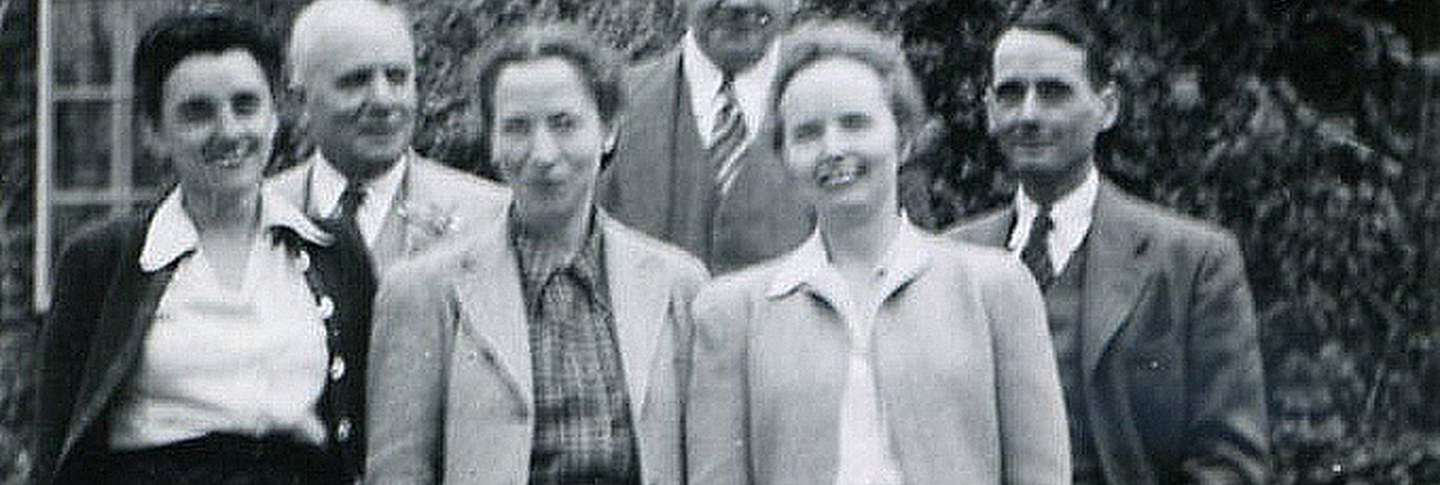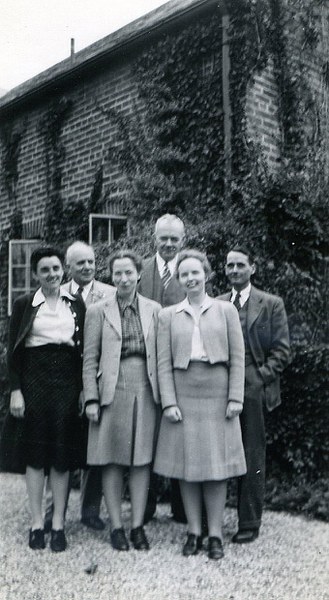In 1941, the Administrative Committee at Dumbarton Oaks appointed Wilhelm Koehler as senior fellow in charge of research, a position he would hold until 1944. Koehler was a recognized authority on Carolingian manuscript illustration and had come to Harvard University in 1932 as the Kuno Franke Visiting Professor of German Art and Culture. After Harvard’s medieval art historian, A. Kingsley Porter, died in a drowning accident in 1933, Koehler was chosen to replace him.
As senior fellow in charge of research at Dumbarton Oaks, Koehler was tasked with developing the first academic program, a program that, at his instigation, was to be largely based on collaborative research. Koehler’s program, in fact, was quite similar to that used by the German Archaeological Institute at its various locations. Young scholars of promise, who typically had already completed their doctoral degrees, were to be awarded Junior Fellowships for a period up to three years. Koehler advocated a fairly constant rotation in the fellowship appointments:
We expect that eventually a certain regularity in the yearly turn-over of older Fellows into suitable positions elsewhere and their replacement by younger scholars will develop, which would provide at the same time for a continuous circulation of new blood.
—Wilhelm Koehler, “The Dumbarton Oaks Program and the Principle of Collaborative Research,” Speculum 18, no. 1 (January, 1943): 118.
While at Dumbarton Oaks, the Fellows were to devote half of their time to a collective research project and half of their time to their own individual research. The collaborative project involved the gathering of data to demonstrate the formation and development of early Byzantine art. This was done in order to dispel what Koehler called the “arbitrary hypotheses,” which he believed plagued Byzantine studies. The focus of the research was to be on early Byzantine monumental structures in situ, including “all integral decorative accessories such as sculptures, mosaics, wall paintings, and pavements.” To be excluded from this research was what Koehler termed the “‘roving’ material, consisting of the countless small works of art which, uprooted and homeless for many centuries, constitute the bulk of Byzantine material in our collections.”
Koehler believed that scholars had adequately catalogued the “roving” material. This included the Dumbarton Oaks Census of Early Christian and Byzantine Art in North American Collections, which contained over 11,000 mounted black-and-white photographic prints of Byzantine small-scale objects. Koehler stressed that
only by relating the “roving” to the monumental material will it be possible to make progress and to put Byzantine studies on a sound basis. But as the monumental material has never been systematically surveyed and organized, it is suggested that Dumbarton Oaks, which has made in the Census an outstanding contribution to the “roving” material, should now undertake the study of monumental material.


Koehler divided this work into two parts, which quickly came to be known as the “Fontes” and the “Research Archives.” Those junior fellows who were historians and philologists would work on the “Fontes” and search out primary textual sources for passages relevant to early Byzantine buildings. The junior fellows who were archaeologists and art historians would review the existing publications on Byzantine monumental structures and compile critical dossiers. There was no thought of going to study the actual monuments, as this was the height of the Second World War and travel was difficult at best. The long-term goal of this collective research was to be the publication of an anthology of relevant primary sources and the establishment of a “Research Archives” for the benefit of future scholars working at Dumbarton Oaks. Koehler articulated his vision for this academic program in a paper titled “The Dumbarton Oaks Program and the Principle of Collaborative Research,” which he read at a meeting of the College Art Association and then published in the journal Speculum.

In explaining his program of collaborative research, Koehler faulted the typical research institute for exclusively fostering isolated scholarly investigation. In his opinion, this tradition had often failed due to the fact that no one scholar had the training or the resources to successfully investigate the complexities of large research topics. As Koehler put it, “too often the effort on the part of the scholar is out of all proportion to the result.” Dumbarton Oaks, in his plan, would firmly depart from this well-established, but ill-conceived tradition. The collaborative research of scholars in residence over a considerable period of time would be the “cure” for this “unfortunate situation”:
to coordinate the research of a group of scholars who are living in different places [would] be a difficult and strenuous task, requiring much unselfishness, much tact, skill and patience on the part of the scholar who is in charge of the project.
Whereas by working together at Dumbarton Oaks, scholars could systematically match the pertinent written sources to the monumental art of all early Byzantine provinces, and from this combined data, stylistic developments and chronologies could be established. To do this, a collaborative team was needed. Koehler summarized the program:
the research program of Dumbarton Oaks implies that the individual efforts of a group of scholars are directed towards a common goal of broad historical scope [which is] the clarification of the origins and of the development of early Byzantine art. That means that to a certain degree the individual scholar yields his independence in favor of collaboration with other scholars. [Moreover,] the close contact between collaborators stimulates the efforts of the individual and provides the basis for constructive criticism on the one hand [and] for reciprocal advice and support on the other.
Interestingly, in this period of the Second World War, Koehler equated the collaborative research model to the model of democracy: the functioning of the individual needed to be channeled to the greater need of society, which was a fundamental principle of democracy.
Koehler’s restriction of the initial collaborative research program to the early Byzantine period and to monumental structures and their decorations was done only for reasons of expediency. Koehler envisioned that the program would expand to include the middle and late Byzantine periods as well and, perhaps more importantly, would embrace “church history, economic history, the history of literature, etc.” Only at Dumbarton Oaks, Koehler argued, where its fellows were chosen from the many branches of Byzantine studies, could this close collaboration among the various Byzantine disciplines be possible. Koehler suggested that scholars engaged in the analysis and interpretation of this material would be led into other fields of Byzantine civilization in order to
correlate its development with the background of institutions, religious thought, liturgy, and social and economic development, and other aspects of eastern history, local and general. For the interpretation we will need cooperation between the historian of art, the specialists in social and economic history, the experts in the history of the Church and those interested in Geistesgeschichte and other related fields.
Koehler’s collaborative research plan at Dumbarton Oaks was not destined to endure, however. The catalyst for its abandonment was the arrival at Dumbarton Oaks in 1943 of the Princeton University medieval art historian, Albert Mathias Friend Jr.

